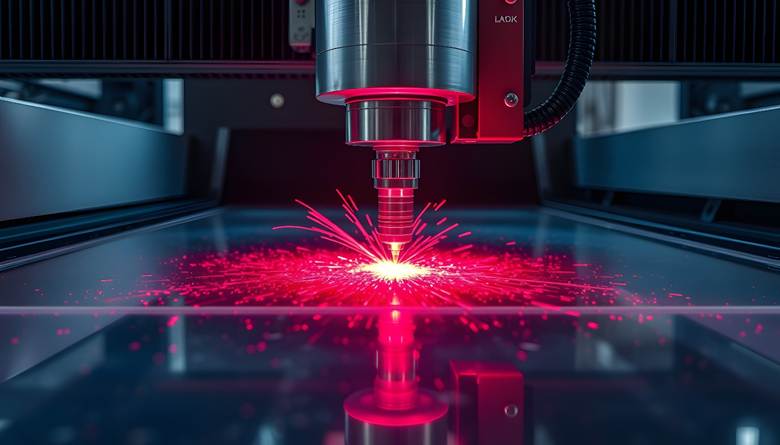
Seng Tiong Ho is a researcher working in the evolving field of integrated photonics, with a particular emphasis on the miniaturization and performance optimization of laser frequency combs. These tools, which were once found only in advanced physics laboratories, are now being explored for use in compact, real-world systems. Ho’s work contributes to the transition of this technology from a scientific niche into a practical solution for spectroscopy, precision measurement, and sensing.
At the core of chip-based frequency comb systems are optical microresonators—structures designed to trap and circulate light. These resonators enable the generation of frequency combs by exploiting nonlinear optical effects. Seng Tiong Ho’s research focuses on refining the properties of these microresonators to improve the stability and quality of the comb output.
His work explores material platforms such as silicon nitride and lithium niobate, which are known for their low optical losses and compatibility with semiconductor manufacturing. By optimizing waveguide geometries and coupling conditions, Ho aims to enhance the performance of microresonators across several dimensions, including threshold power, bandwidth, and phase coherence.
One challenge in transitioning laser frequency combs from lab-scale setups to chip-integrated devices is the sensitivity of these systems to environmental changes. Variations in temperature, mechanical stress, and ambient conditions can degrade performance, particularly in applications that demand long-term frequency stability.
Seng Tiong Ho addresses this issue by researching thermal stabilization methods and athermal design techniques. His work includes the development of device architectures that minimize sensitivity to environmental shifts, thereby ensuring consistent performance across varying conditions. These advancements are particularly relevant to applications in field-deployed sensors and communication networks, where environmental control is not always possible.
Optical frequency combs have long been associated with high-precision metrology—providing the means to measure optical frequencies with exceptional accuracy. Seng Tiong Ho’s contributions include research into maintaining phase and frequency coherence within integrated comb systems, ensuring their utility in applications like atomic clock calibration, frequency referencing, and high-precision spectroscopy.
By working on methods to stabilize the optical output of chip-scale devices, Ho supports efforts to build compact systems that meet the rigorous requirements of time-sensitive applications. These include optical communications, network synchronization, and scientific instrumentation, where timing accuracy is essential.
Miniaturization is a critical factor for deploying frequency combs beyond the lab. Seng Tiong Ho’s research includes the integration of comb generators with other essential photonic components—lasers, amplifiers, modulators, and detectors—onto a single chip.
This integration reduces the physical footprint and energy consumption of comb systems, making them viable for portable and embedded applications. His work has examined how various materials and fabrication processes can be combined to support hybrid platforms, allowing multiple optical functions to coexist on a shared substrate without compromising performance.
In systems where payload constraints and environmental extremes play a defining role—such as in aerospace or defense applications—photonic devices must meet demanding specifications. Seng Tiong Ho’s studies explore how frequency combs can be adapted for these contexts through improved thermal stability, radiation tolerance, and mechanical resilience.
Although his focus remains grounded in fundamental research, these investigations could inform future developments of photonic systems for satellites, planetary exploration tools, or onboard navigation and sensing units. The potential for lightweight, low-power frequency combs in space environments continues to drive interest in his work.
Seng Tiong Ho has also contributed to interdisciplinary research exploring the use of mid-infrared frequency combs for diagnostic and environmental applications. These combs can serve as powerful spectroscopic tools that identify specific molecules based on their absorption characteristics.
In biomedical settings, this can enable non-invasive detection of disease biomarkers in breath, blood, or other biological samples. Similarly, in environmental monitoring, frequency combs can detect trace gases and pollutants at low concentrations, supporting efforts to understand and manage air quality and emissions. Ho’s contributions in enhancing the sensitivity and spectral resolution of these systems are foundational to such applications.
Creating high-performance frequency combs on a chip involves not only optical design but also advanced fabrication. Seng Tiong Ho’s work addresses challenges in photonic device manufacturing, including lithographic precision, sidewall roughness, and surface scattering.
His efforts in refining fabrication processes contribute to improvements in the quality factor (Q-factor) of microresonators, which directly impacts the efficiency and stability of comb generation. By reducing fabrication defects and optimizing the integration of multiple layers, his research supports the scalability and reproducibility of chip-scale photonic systems.
While Seng Tiong Ho’s primary focus is on research and development, his work informs broader engineering efforts to transition photonic frequency combs into usable systems. By aligning device characteristics with the needs of real-world applications, Ho’s contributions help bridge the gap between academic prototypes and functional technologies.
His research provides insights that guide the design of instruments for telecommunications, sensing, metrology, and diagnostics. In this way, his work helps define the specifications and performance benchmarks for the next generation of compact photonic systems.
As integrated photonic technologies continue to evolve, the applications of laser frequency combs are expected to expand. Seng Tiong Ho’s work lays a foundation for future developments in areas such as smart sensing, precision navigation, secure communications, and real-time diagnostics.
Whether through advancements in fabrication, environmental resilience, or spectral control, his research supports the broader goal of making high-performance frequency comb systems accessible beyond research institutions. With the growth of the Internet of Things, smart infrastructure, and compact scientific instruments, the demand for precise, energy-efficient optical tools is only set to increase.
Seng Tiong Ho’s efforts help ensure that the science behind these tools is matched by engineering solutions capable of meeting this demand. As frequency comb technology continues to integrate into everyday systems, the foundational research of specialists like Ho remains central to its advancement and success.